This is What Sand Magnified Up to 300x Looks Like [Photos]
Tags: opinion
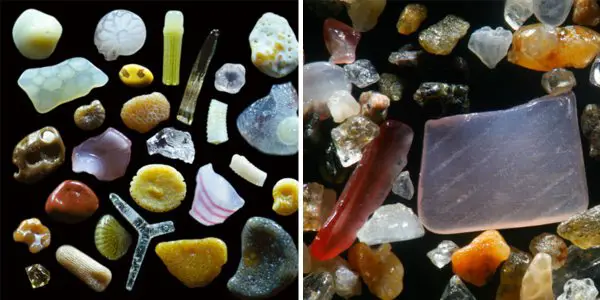
By Amanda Froelich
“To see a world in a grain of sand,
And heaven in a wild flower,
Hold infinity in the palm of your hand,
and eternity in an hour.”
— William Blake
When Blake scribed this poem, he likely knew that because everything is connected, it is a reflection of everything else. Therefore, you can see the beauty of heaven in a wildflower, as well as in a tiny grain of sand. If you seek additional evidence, look to Dr. Gary Greenberg’s work.
Greenberg is a fascinating individual. Until the age of 33, he worked as a photographer and filmmaker. But then, he moved from LA to London and earned a Ph.D. in biomedical research. His curiosity for the natural world and his background in photography led him to develop the high-definition 3D microscope. As a result, he now has 18 patents under his name.
With the invention, Greenberg can photograph grains of sand up to 300x magnification. The photographs reveal that even minute aspects of Creation are beautiful. Just perhaps, Blake was onto something…
Following are 10+ photographs of magnified sand:
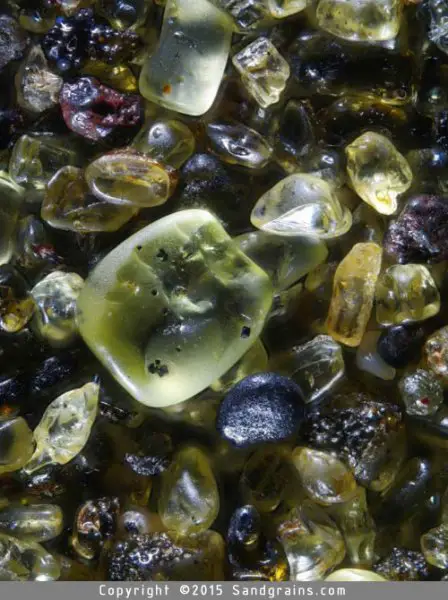
South Point on the Big Island of Hawai’i is the most southerly point of land in the United States and the source of this sand. These translucent green grains are olivine. At South Point on Mauna Loa’s southwest rift, the pounding surf erodes a forty-nine-thousand-year-old volcanic cinder cone made of olivine. As the cone erodes, the olivine crystals become beach sand. Very few beaches consist of pure olivine; however, if there is olivine in a sand, that indicates it is a volcanic region. The deep-red grain (upper left) is volcanic rock. Magnified 250 times.
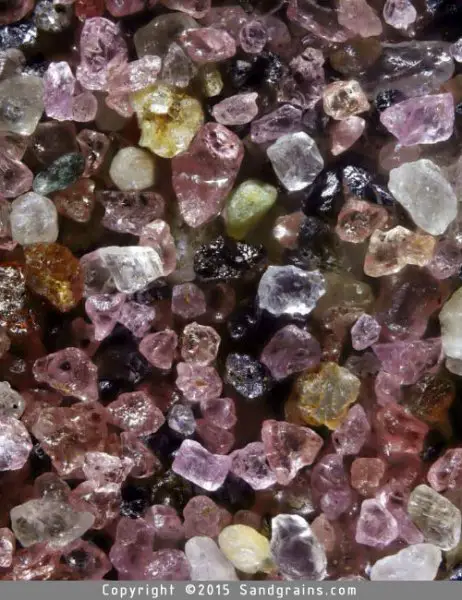
The beach at Plum Island, Rowley, Massachusetts, the northernmost barrier island in the United States, gets its pink color from garnets in the sand. As garnet is denser than most other sand grains, it gets left behind as the waves sweep the less dense material farther away. Magnified 60 times.
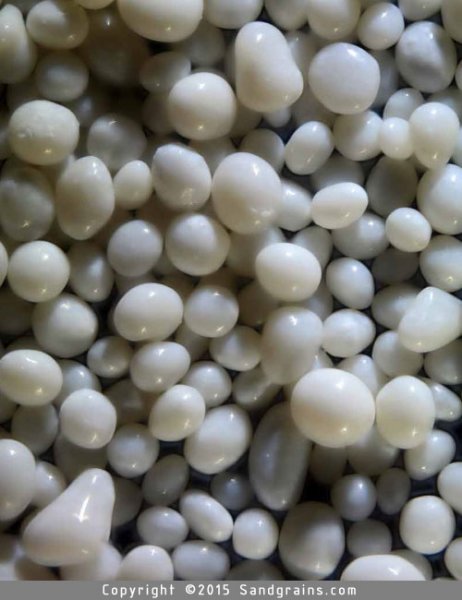
These roundish grains are ooids, grains of calcium carbonate that precipitated from the ocean water along margins of the Great Bahama Bank, one of three areas in the world where ooids are actively being formed. These are from Joulter Cays, located about ten miles north of Andros Island in the Bahamas. The shallow water over the bank results in strong tidal currents; this keeps the ooids in near-constant motion and results in carbonate precipitation around the grains. Magnified 75 times.
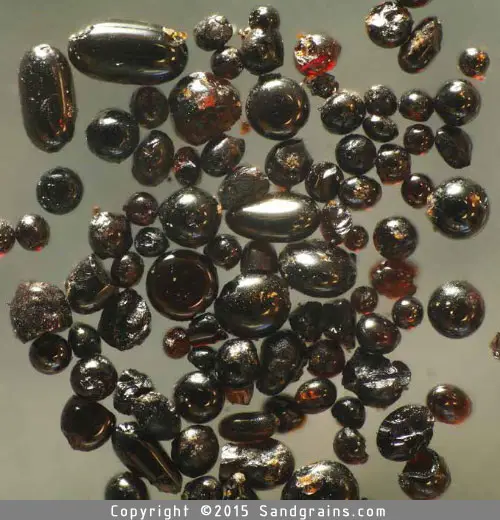
These tiny, glassy orange spherules originate from a fire-fountain volcano that erupted over 3.8 billion years ago. Apollo 17 astronauts discovered this “orange soil” on the rim of Shorty Crater in the Taurus Littrow Valley. Magnified 340 times.
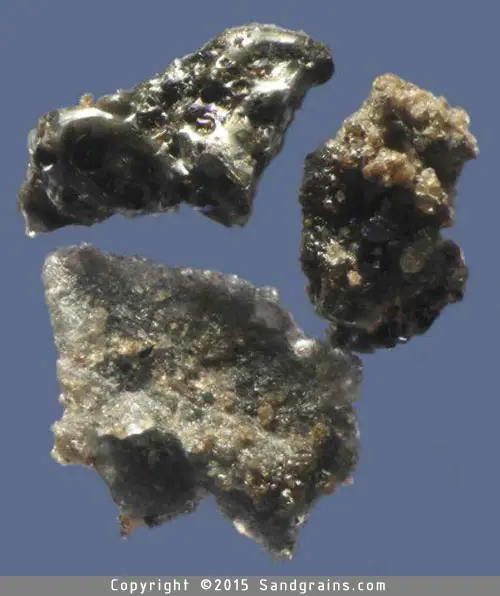
Here is a collection of particles isolated from lunar dust collected from the Fra Mauro Formation during the Apollo 14 mission. All three particles were formed during a meteor strike. The dark gray particle on the top left is clearly agglutinate, in which smaller particles have become encased in impact melt glass. The other two are more breccia like, the particles welded together during impact. Magnified 240 times.
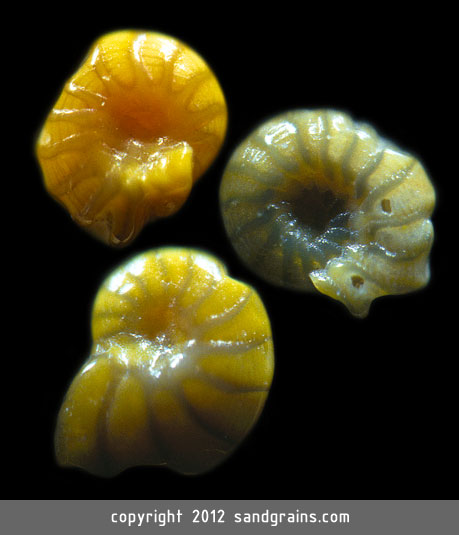
(TINY MICRO SHELLS) Microscopic shells are the size of tiny grain of sand (magnified 300 times).
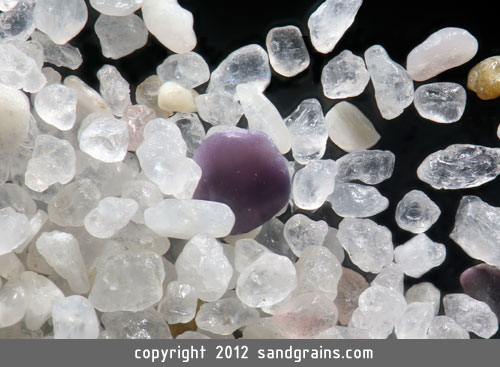
(ERODED QUARTZ CRYSTAL) These tiny grains of sand have eroded over hundreds of millions of years and their original crystal shape is not longer seen (magnified 100 times).
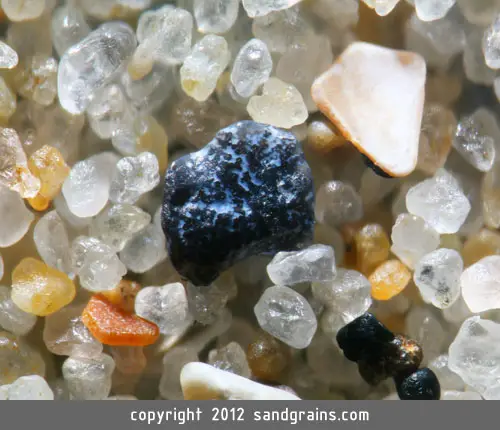
(BELGIAN SAND) A piece of industrial slag becomes a black and blue sand grain on a quartz beach in Belgium (magnification 100 times)
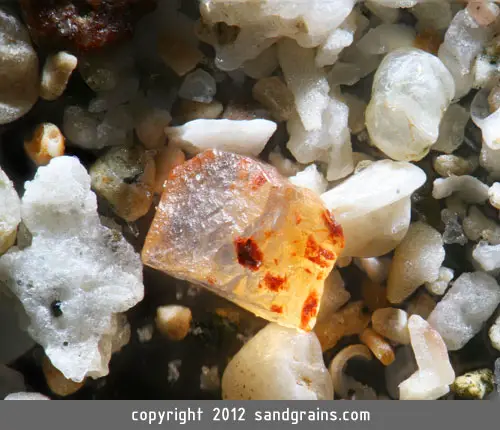
TAMARINDO SAND GRAIN) A grain of sand from Tamarindo Beach, Costa Rica, is made of chabazite, a glassy cubic mineral.
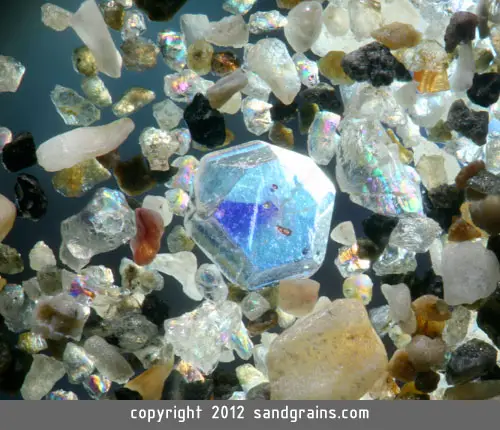
(A TINY SAPPHIRE) Sand from Japan contains what looks like a sapphire crystal (magnified 150 times)
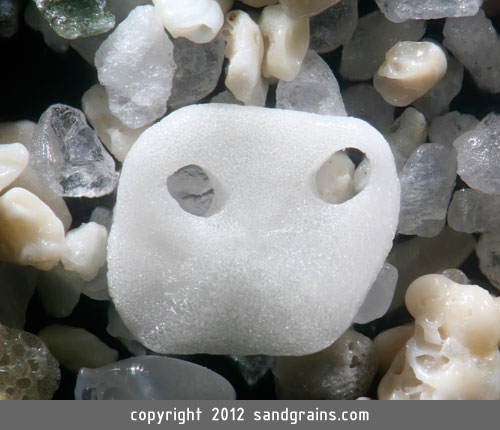
(MASK SAND) A single grain of sand from the island of Corsica, France, looks like a mask (magnification 150 times).

(SQUARE SAND) A square-shaped shell fragment is found amidst sand from Masaya, Nicaragua (magnification 80 times)
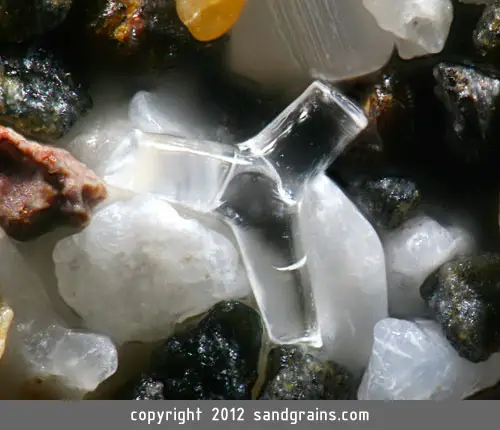
(HAMOA SPONGE SPICULE) Sand from Hamoa Beach, Maui, Hawaii, contains a fragment of a sponge spicule that forms the internal skeleton of a glassy sponge (magnified 100 times).
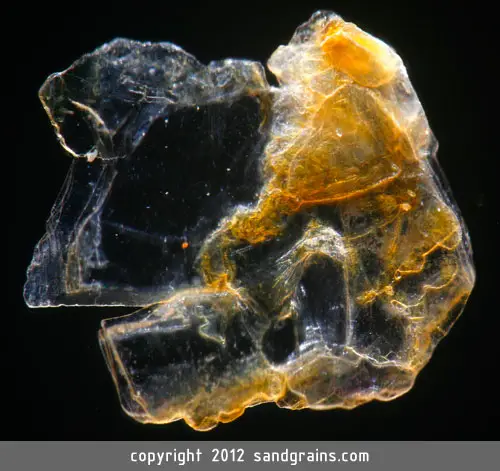
(MICA FRAGMENT) A small piece of mica from Smith Mountain Lake, Virginia, is magnified 100 times
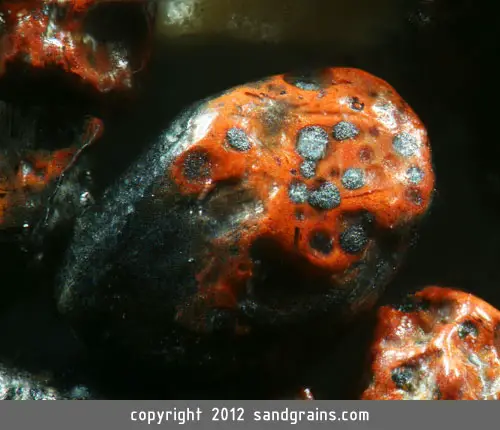
(MAKENA BLACK & RED) Glassy red and black volcanic sand grains are found in the sand from Makena Point, Maui, Hawaii (magnification 100 times).
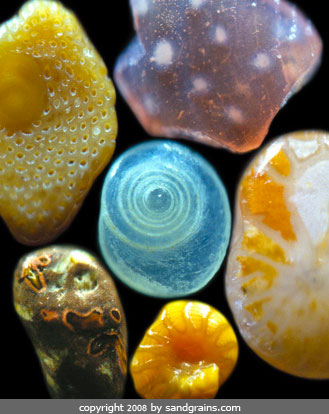
(BLUE, ORANGE & PINK SAND GRAINS) The tip of a spiral shell has broken off and become a grain of sand. After being repeatedly tumbled by action of the surf this spiral sand grain has become opalescent in character. It is surrounded by bits of coral, shell, and volcanic material.
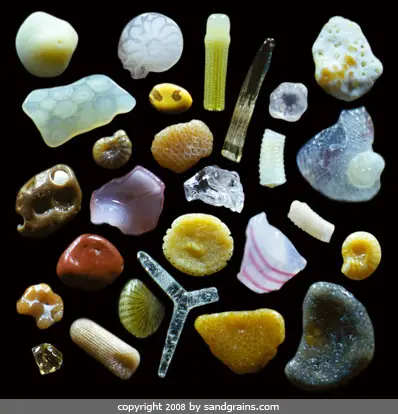
(MAUI SAND GRAINS ARRANGEMENT #2) This image is a handful of sand grains selected from a beach in Maui and are arranged onto a black background. The colors and shapes of these tiny grains of sand are surprisingly different and astonishingly beautiful, each with it’s own individual in character.
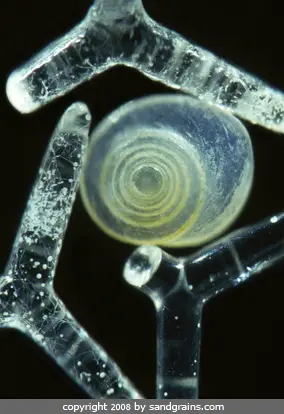
(S{PONGE SPICULES WITH SPIRAL SAND GRAIN 2) Three sponge spicules surround a blue spiral sand grain. Sponge spicules are the internal skeleton of most species of sponges. They are made of silica.
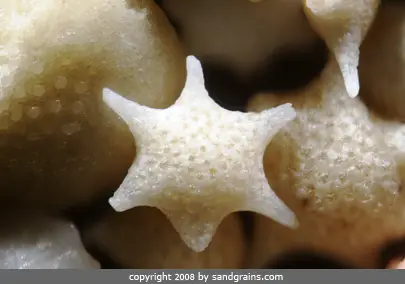
(PUFFY STAR) Sand grains from Okinawa, Japan are made from the skeletons of single-celled forams that produce these beautiful little shells.

(MAUI SAND GRAINS PANORAMA) A panorama of selected sand grains arranged on a glass slide using acupuncture needles to herd the grains into place. The image is pieced together from half a dozen images taken side by side, and then stitched together into one panoramic image.
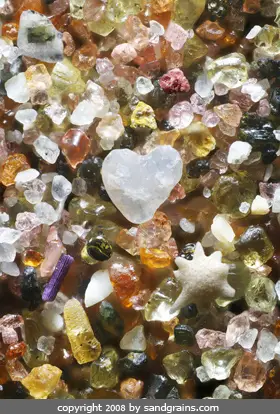
(HEART GEMS) Sand grains from around the world are mixed together like a pouch full of gems. The sand grains are from Maui, Hawaii, Japan, California, Ireland, Bermuda, and Minnesota.
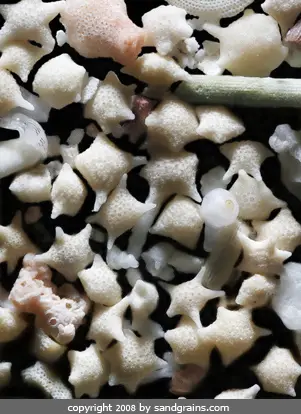
(PUFFY STARS) Star-Shaped Sand Grains from Okinawa. These tiny foram, a type of protozoa, secrete beautiful star-shaped, calcium carbonate shells, or tests.
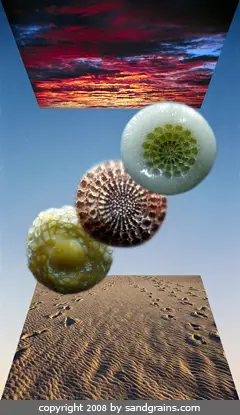
(FOOTPRINTS, SUNSET & 3 SANDGRAINS) Three sand grains float between a beach and sunset: one coral sand grains and two bits of sea urchin spine are tiny natural mandalas.
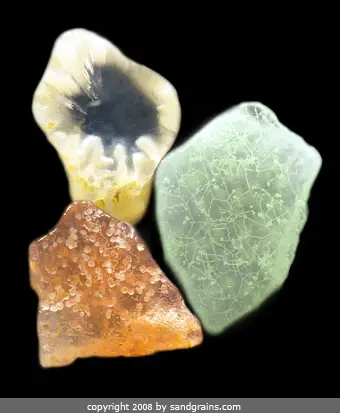
(MAUI RED) Three sand grains from the red sand beach at Makena Point, Maui are heavily eroded, revealing their beautiful interiors.
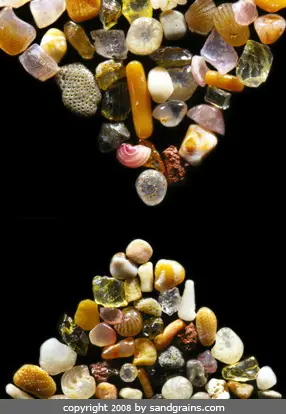
(SAND TIME) Each grain of sand represents a moment captured in time. It is somewhere on its path from its creation to erosion and recycling back into the earth.
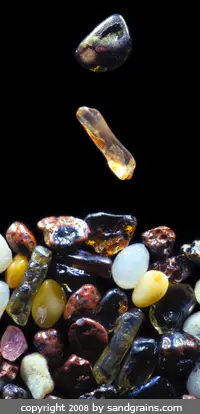
(FALLING SAND) Maui sand grains from Makena Point, Maui, Hawaii, fall into place. There is a red volcanic outcropping at Makena Point, which erodes into reddish black beach sand.
Over 5000 people have downloaded our free ebook “Growth Hacking Tips And Rituals For Optimal Living” CLICK HERE to get your free copy now
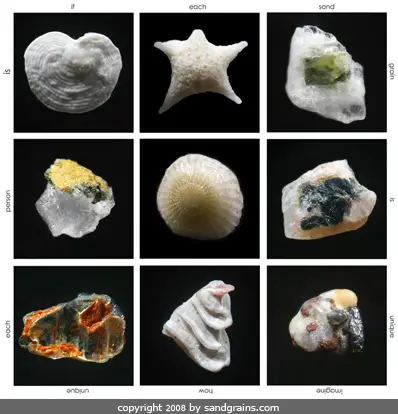
(NINE SAND GRAINS) Every grain of sand in the world is unique and beautiful when viewed through the microscope. If each grain of sand is so beautiful and unique, imagine how beautiful and unique each person is?
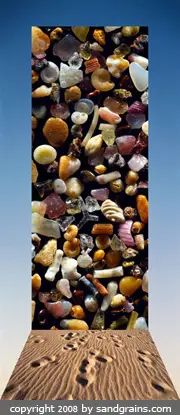
(FOOTPRINTS, SKY & MAUI SAND GRAINS) When we walk along the beach we are strolling atop millions of years of biological and geological history. Sand from Maui, Hawaii contains grains of volcanic origins, as well as the many remnants of biological organisms such as shell fragments, sea urchins spines, sponge spicules, bits of coral and forams.
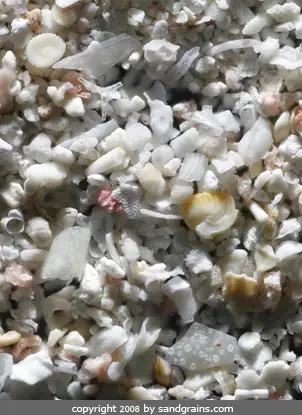
(BERMUDA SAND GRAINS) Sand grains from the beaches of tropical islands like Bermuda are filled with fascinating remnants of biological organisms, including sea urchin spines, shell fragments, bits of coral, glass-like sponge spicules, and the tiny shells of single-cell protists known as forams.
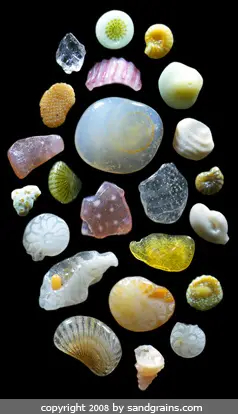
(HAWAIIAN SAND GRAINS ARRANGEMENT) Maui sand grains arrangement shows the diversity of sand grains from a thimble-full of sand from a single beach near Lahaina.
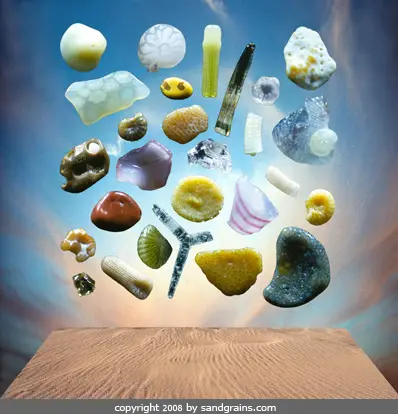
(SAND CLOUDS) Maui Sand Grains appear to float in the Sky with the clouds. These spectacular grains of sand were selected from a thimble-full of Maui sand.
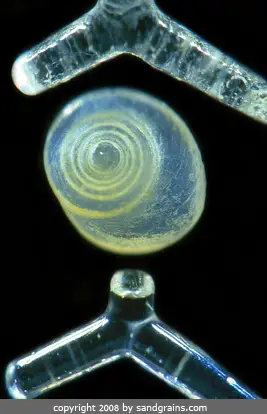
(SPONGE SPICULES WITH SPIRAL SAND GRAIN 1) Here two sponge spicules surround a blue spiral sand grain. Sponge spicules are the internal skeleton of most species of sponges. They are made of silica.
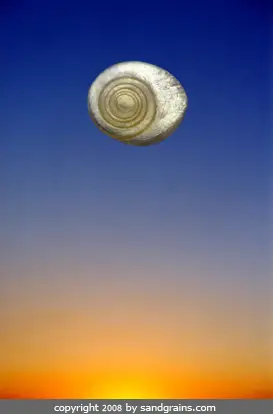
(SUNSET WITH SPIRAL SAND GRAIN) The tip of a spiral shell has broken off and become a tiny grain of sand. It is a “world in a grain of sand”, seen here floating in the sky just after sunset.
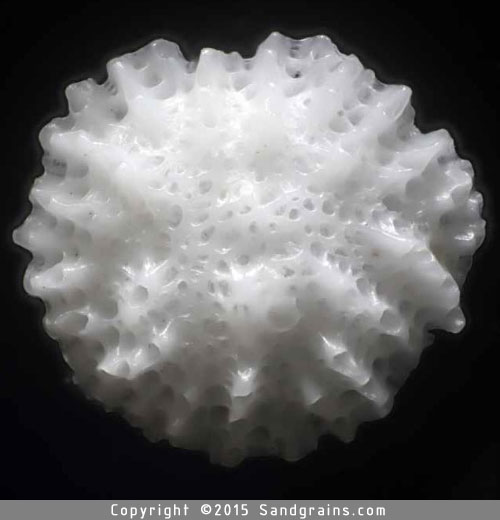
This elegant marine microorganism was found in sand from the Island of Corsica, in the Mediterranean Sea. The area is noted for its diverse marine ecology. The image was created from twelve individual photographs taken at different focus levels. The identification of this microorganism remains a mystery. Magnified 100 times.
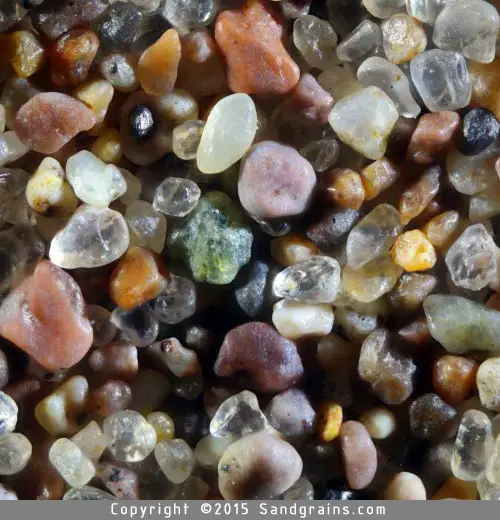
Colorado’s spectacular Great Sand Dunes are the highest sand dunes in North America at around 750 feet. This pretty sand contains a variety of sediments blown from the old flood plain of the Rio Grande River and sediments that have eroded from the nearby mountains. Minerals identifiable in this photograph include the clear quartz crystal (near center), the caramel-colored feldspar grain with the ninety-degree angles, and the two pink, angled-to-rounded garnet grains. Magnified
Leave Comment: